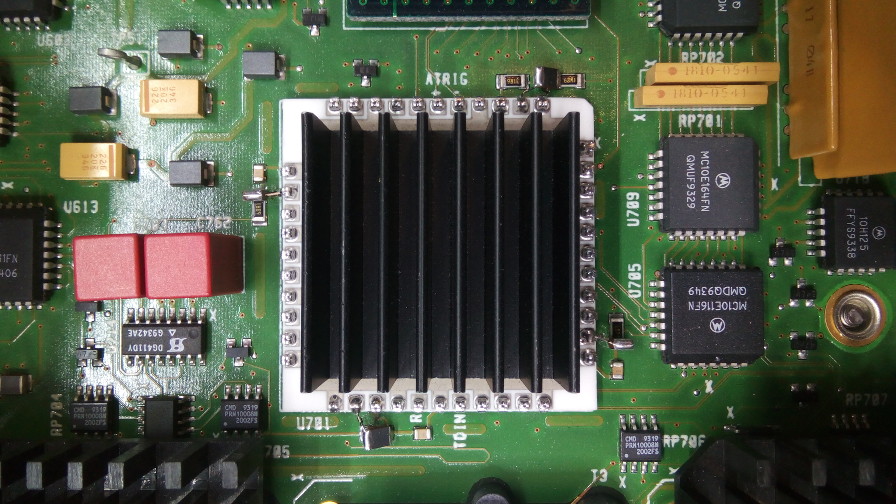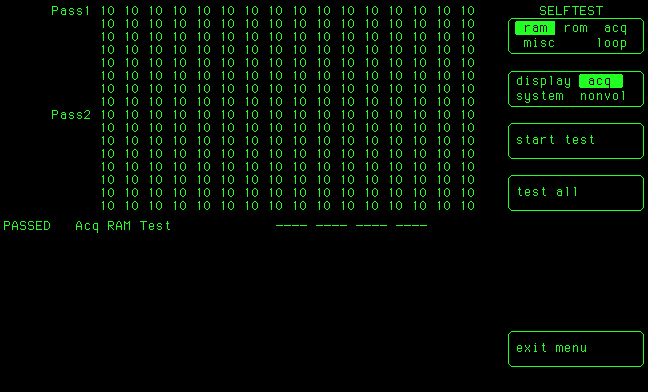Fixing an intermittent acquisition RAM failure on the HP-54542A | |
|
After a couple of months of usage and quite a few case openings my HP-54542A developed an annoying problem. This first happened when recalibrating the scope after installing a new battery. At that time a calibration step failed almost systematically for channel 3 and ended up working only when the scope was cold. Strange. Later on I made more self-tests and noticed the acquisition RAM failed a lot, but still not systematically. The acquisition RAM is located in the front-end hybrid, the most expensive to replace bit of the scope. Not the most difficult to replace though, as the hybrid is nicely socketted, but it's a little hard to find those hybrids on the market: you just have to get a scope for parts. Quick note before starting: this fix is also valid for other scopes of the same family: the HP-54540A, HP-54520A, HP-54522A, HP-54542C, HP-54540C, HP-54520C and HP-54522C, or basically any Hewlett-Packard scope that fits HP-545(2|4)(0|2)(A|C). Yes I just included a regular expression in my prose :) I attempted to fix the issue earlier by re-installing the heat sink for the hybrid, thinking that the intermittent problem was likely a temperature/contact issue. No luck. The next step is thus to remove the hybrid and reseat eat, cleaning the contacts and whatever I'll find there. This is a bit of an open-heart surgery job: the hybrids are very fragile (ceramic boards) and sensitive to static electricity. Scary stuff. But there was no use postponing this further: if the hybrid is dead then I'd rather know soon so I can jump on an auction for a junk scope of the same family (54522A/C or 54542A/C) to get a replacement hybrid. More recently I observed the effect of the failed acquisition RAM first hand: some waveforms on channel 3 were a bit... messed up. After creating a screenshot script I am now able to share just how bad it was. First two normal pics: 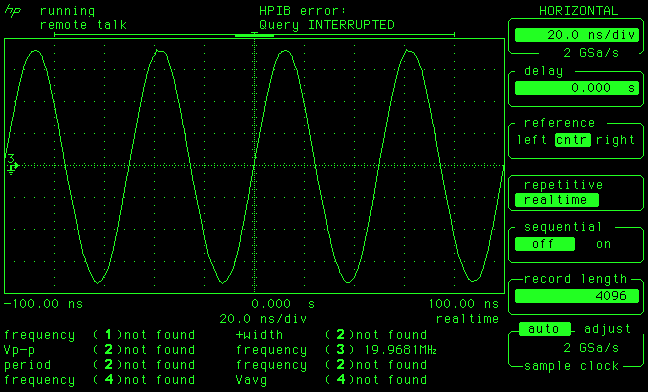 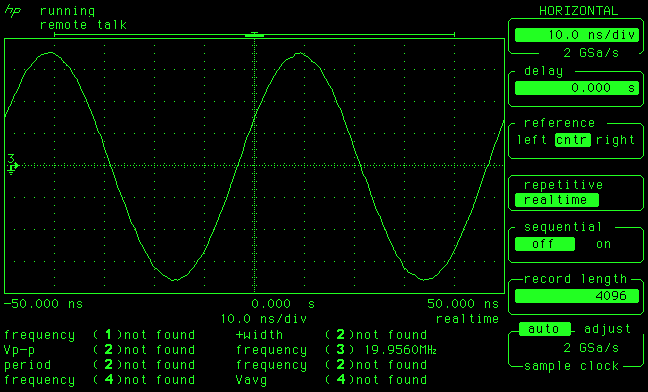 What is should look like Now let's see a menagerie of the type of waveforms I would sometimes see...  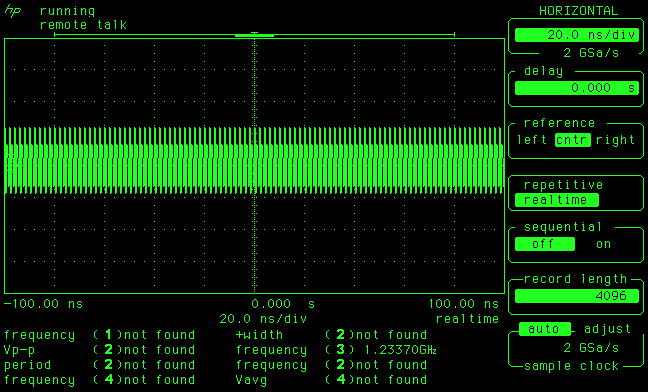 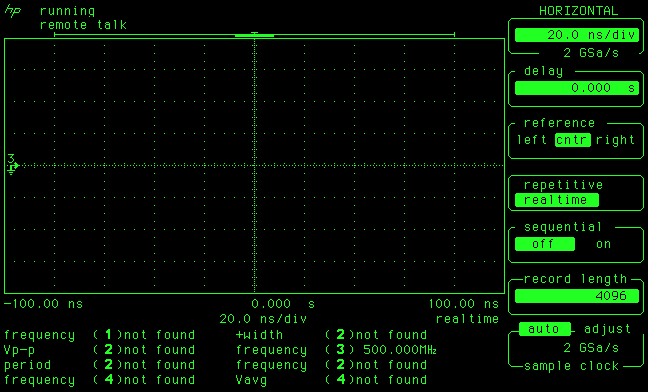  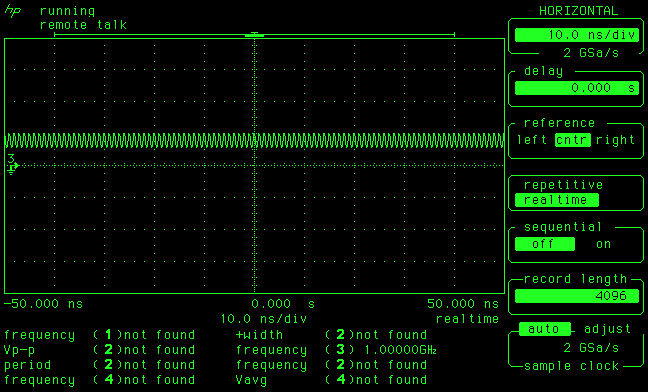    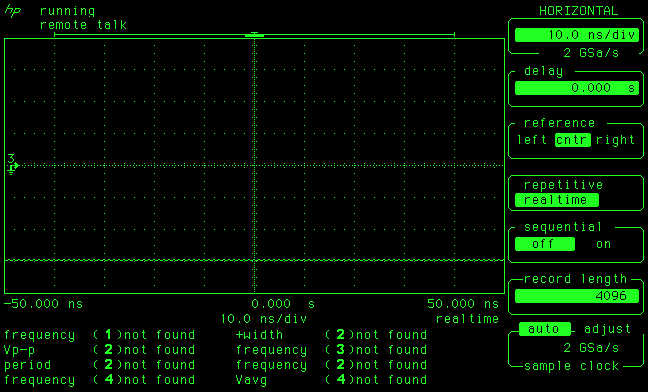 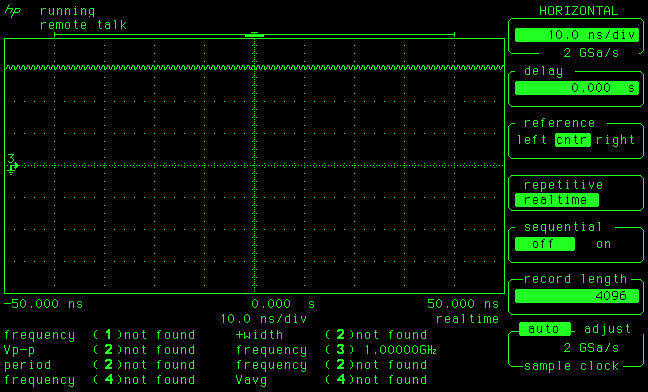 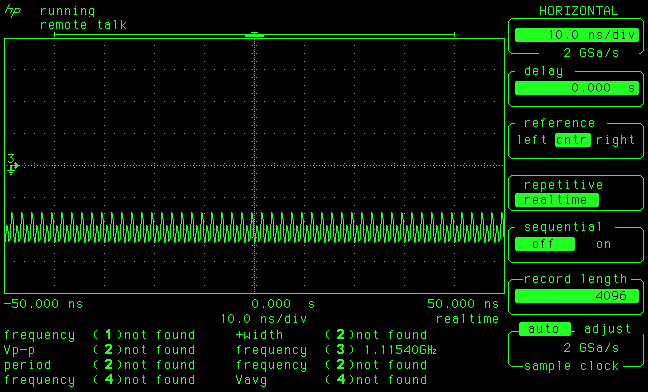  Needless to say this is nicht gut. Dare I say NFG? Yes, the mark of the beast was looming... Time to get our hands dirty! The HP service manual is a must here: the procedure to change a hybrid has to be performed carefully to avoid a most unwelcome ending: static electricity, precise screw torque, etc... First we open the scope and remove the heat sink:  The 4 hybrids 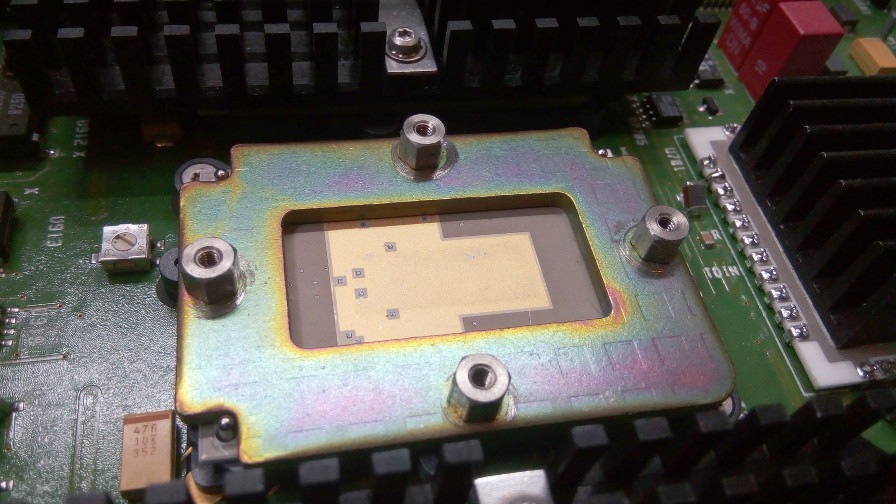 The nasty apprentice marks here and there are not a good sign We can now see the underside of the hybrid (all the electrons are going to fall out! Maybe that was the problem?!) Some nasty apprentice marks are also visible not only around each hex standoff but also on the hybrid itself. Gaaaa! While I'm working around the hybrid I noticed some cute voluntarily tomb-stoned caps around the other big heat-sunk IC next to the channel 3 hybrid. Nice bodge! 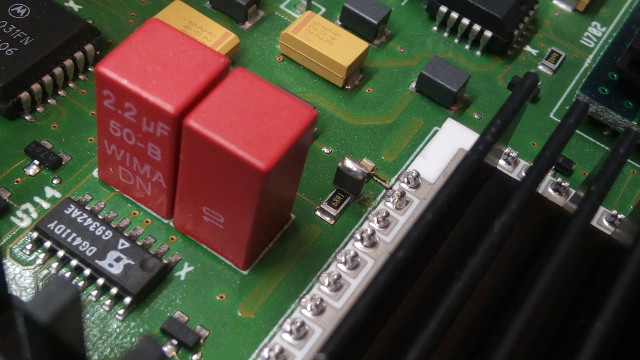
The next step is to remove the top metal mounting plate by removing the 4 hex standoffs. The thick metal plate is there to spread the pressure induced by the standoffs/screws. The latter are quite thin, the torque on those is clearly limited as is confirmed by the service manual.  Thin stand-offs: don't over-torque them!  After the removal of the stand-offs/screws. Those scratches are nasty 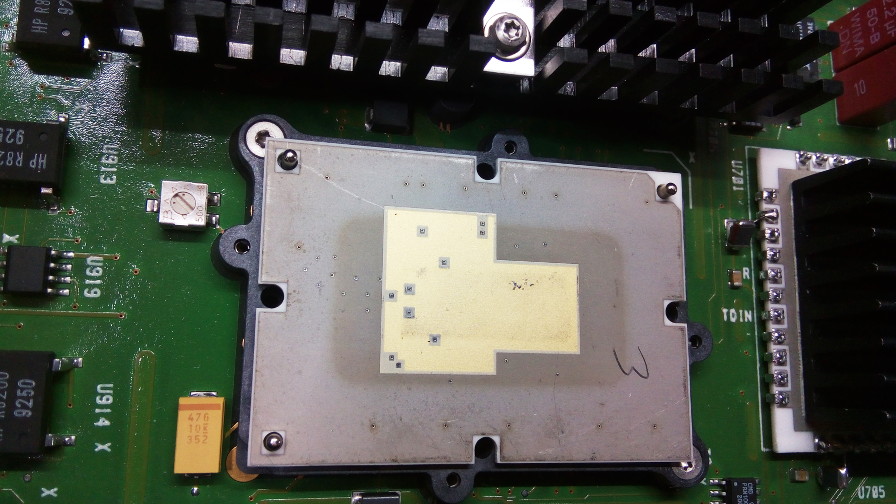 After the removal of the pressure plate Finally we can very, very carefully remove the hybrid. Needless to say, anti-static protection is a must. From there I cleaned all the contacts with a cotton swab and IPA, both on the socket and on the hybrid itself. The back of the hybrid which is in contact with the heat sink was also cleaned up with the swab, and was by far the dirtiest. The contacts themselves were clean. 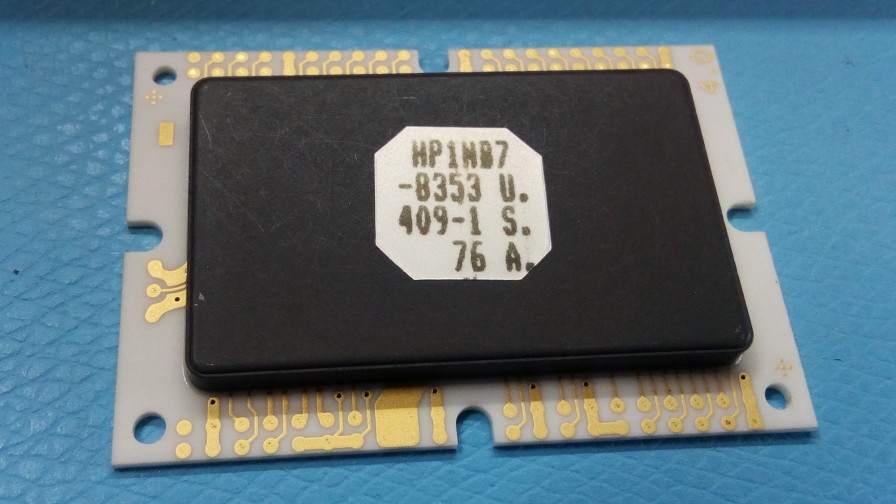 Thy Lord the Hybrid. I hope that you'll never see that with your own eyes...  The hybrid socket. Note that few pins are actually populated. The pins barely protrude, which could explain some poor contacts.  Dirty swab The heat sink is thermally linked to the hybrid not using nasty thermal paste but with a shiny pad that looks vaguely metallic. This also got the swab+IPA treatment. Finally everything can be put back together, paying extra attention to the orientation of each part (you can't get it wrong, there's pins preventing orientation errors). Then the stand-offs can be screwed back in. For me this was a bit of a problem because I don't have a torque wrench and therefore I could not confirm that I used the proper 5Nm. But what I did notice during disassembly is that the standoffs were not very strongly screwed. I was hoping to get a feel of the required torque, but clearly the torque I observed was lower than 5Nm. So from the beginning I suspected a badly reinstalled hybrid. Now that it's my turn to torque those screws I'll do it better: in the right sequence and with a better torque. After all this it was time to test. Was channel 3 completely dead now? Did I break it? Zap it? Or maybe... fix it? The problem only appeared after a few minutes of warm-up, so I pressed the ACQ RAM test button a few times for a few minutes, and all seemed A-OK. So far. Then it's time to close the box, reinstall it on the workbench and run the tests again, for a good hour this time. I'm happy to report that everything is good! 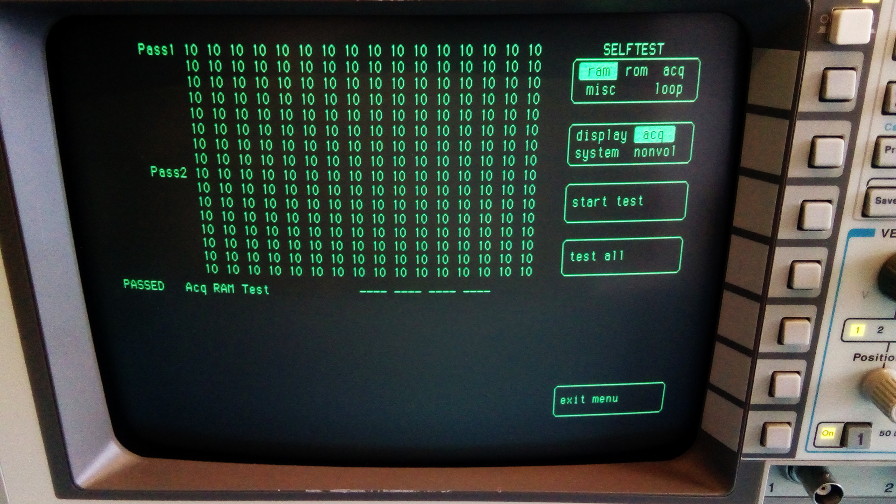
May this HP-54542A have a long and productive second life... | |
| © 2024 Damien Douxchamps. All rights reserved. | |


